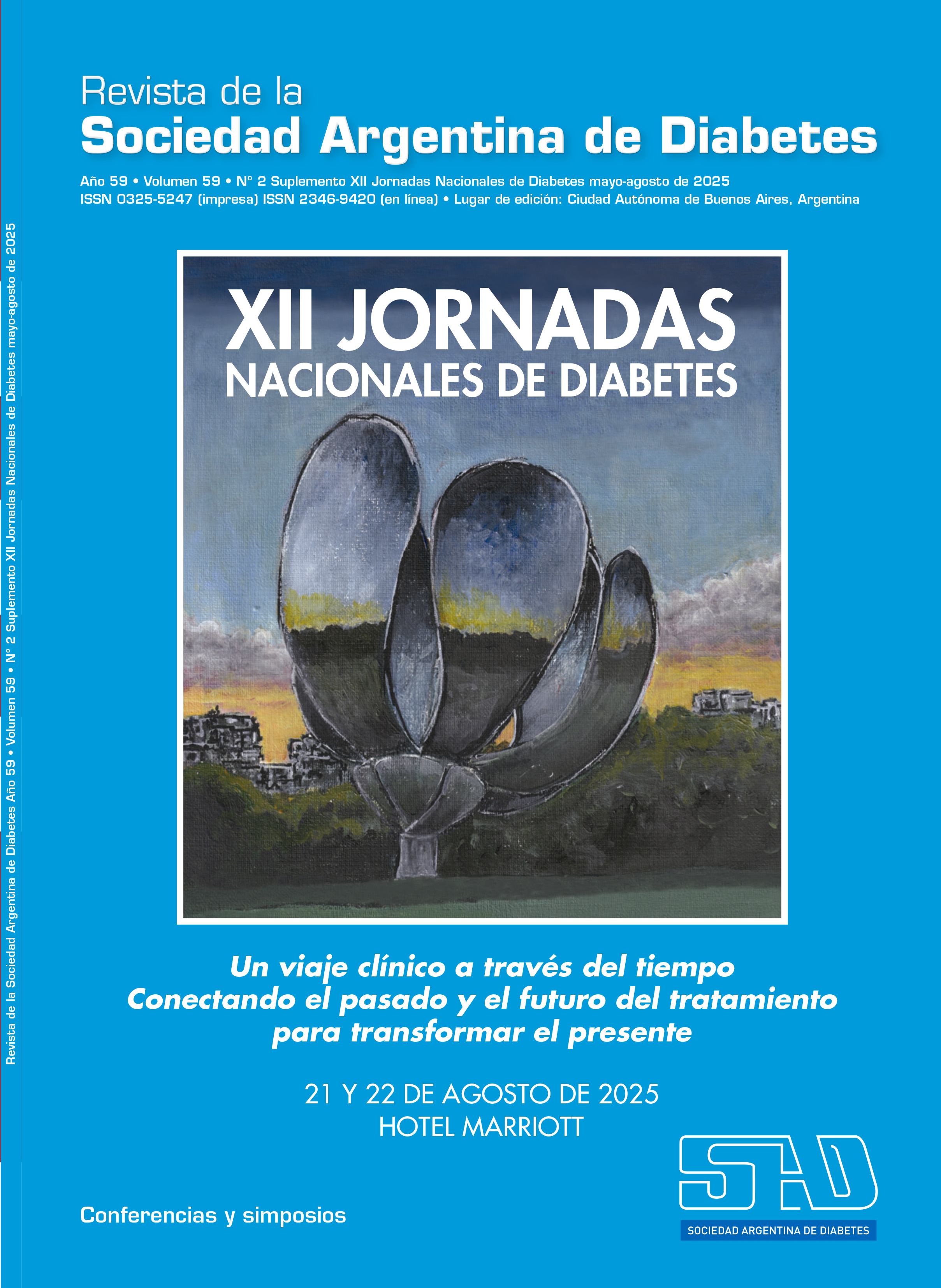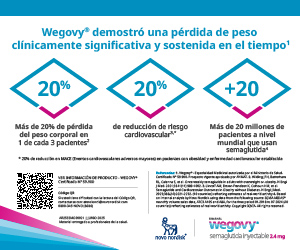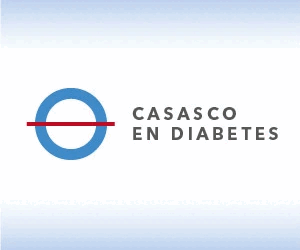Impact of obesity on the development (accelerator) of type 1 diabetes. Is there evidence?
DOI:
https://doi.org/10.47196/diab.v59i2Sup.1212Keywords:
obesity, type 1 diabetesAbstract
The risk of developing type 1 diabetes mellitus (T1DM) is determined by a complex interaction between multiple genes and environmental factors. In recent years, in parallel with the obesity epidemic, an increase in the frequency of T1DM has been observed. Several studies have investigated the role of birth weight, weight gain, and obesity in the development of autoimmunity against the pancreatic islet, the progression to multiple antibodies, and the development of T1DM.
Wilkins's (2001) "accelerator hypothesis" proposes that obesity-induced insulin resistance imposes an additional burden on the pancreatic islets in genetically predisposed individuals, inducing autoimmune destruction and/or accelerating its course. This hypothesis questions the classification of T1DM and T2DM, instead considering them as two extremes within a disease spectrum where the main differentiating factor is the rate of progression to overt clinical disease, driven by the interaction between beta cell reserve and insulin sensitivity1.
In a 2023 meta-analysis by Nitecki et al.2, overweight or obese individuals had a 2.55-fold increased risk (95% CI: 1.11–5.86) of developing T1DM. In participants aged 2–18 years in the Trial Net cohort study, those with overweight or obesity had a 63% increased risk of developing T1DM, adjusted for age, sex, and antibody count (HR: 1.63 [95% CI: 1.22–2.18]; p=0.0009)3. The rate of progression from a single antibody to multiple antibodies was also observed to be increased in patients with a high BMI, especially in those older than 9 years with lower-risk HLA (HR 7.32; p=0.004)4.
Obesity and insulin resistance are associated with a state of chronic low-grade inflammation that can have adverse effects on beta cells. It has been hypothesized that insulin resistance increases the secretory demand of beta cells, increases stress on these cells, and causes local cytokine release, neoantigen formation, and beta cell apoptosis, triggering an immune response and insulitis. 1 Interventions to reduce obesity could contribute to reducing or delaying the risk of progression to both T1DM and T2DM.
References
I. March CA, Becker DJ, Libman IM. Nutrition and obesity in the pathogenesis of youth-onset type 1 diabetes and its complications. Front Endocrinol 2021;2:622901. doi:10.3389/fendo.2021.622901.
II. Nitecki M, Gerstein H, Balmakov Y, et al. High BMI and the risk for incident type 1 diabetes mellitus. A systematic review and meta‑analysis of aggregated cohort studies. Cardiovasc Diabetol 2023;2:300. doi: 10.1186/s12933-023-02007-y.
III. Ferrara Cook C, Geyer S, Evans Molina C, et al. Excess BMI accelerates islet autoimmunity in older children and adolescents. Diabetes Care 2020;43:580-587.
IV. Ferrara C, Geyer S, Liu YF, et al. Excess BMI in childhood: a modifiable risk factor for type 1 diabetes development? Diabetes Care 2017;40:698-701.
Downloads
Published
Issue
Section
License
Copyright (c) 2025 on behalf of the authors. Reproduction rights: Argentine Diabetes Society

This work is licensed under a Creative Commons Attribution-NonCommercial-NoDerivatives 4.0 International License.
Dirección Nacional de Derecho de Autor, Exp. N° 5.333.129. Instituto Nacional de la Propiedad Industrial, Marca «Revista de la Sociedad Argentina de Diabetes - Asociación Civil» N° de concesión 2.605.405 y N° de disposición 1.404/13.
La Revista de la SAD está licenciada bajo Licencia Creative Commons Atribución – No Comercial – Sin Obra Derivada 4.0 Internacional.
Por otra parte, la Revista SAD permite que los autores mantengan los derechos de autor sin restricciones.




























